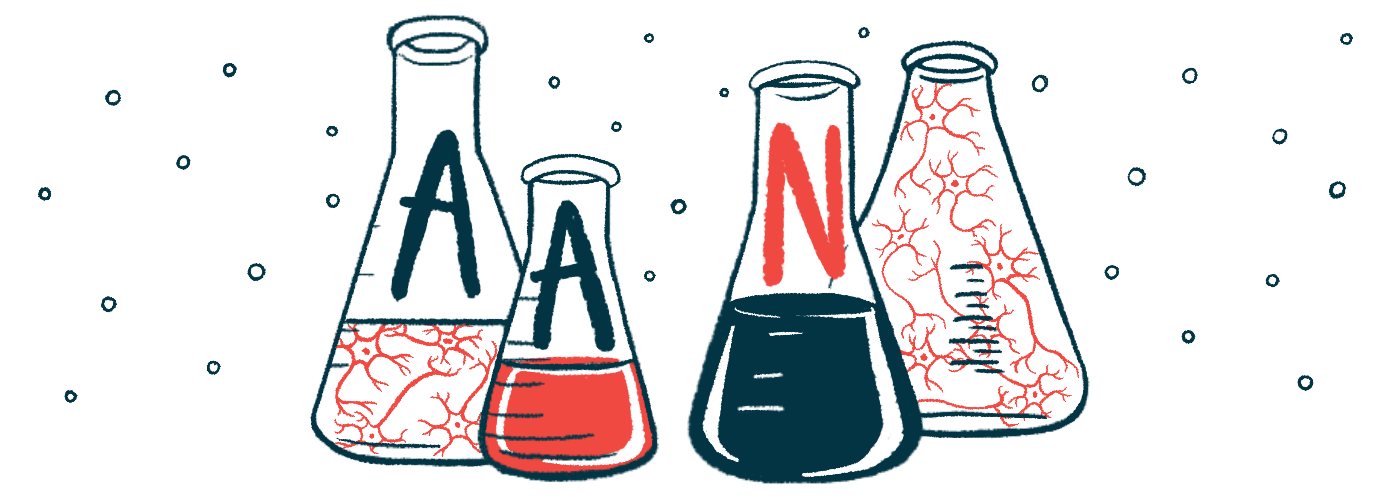AAN 2025: ION859 safely reduces LRRK2 protein in Parkinson’s
Phase 1 study results suggest therapy could help slow symptom progression

ION859, an injectable treatment being developed by Ionis Pharmaceuticals, was generally safe and well tolerated, and it reduced the levels of LRRK2 — a protein often overactive in Parkinson’s disease — even in patients without mutations in the gene that encodes it.
These are data from a now-completed Phase 1 clinical study, REASON (NCT03976349), which tested the safety and tolerability of ION859 compared with a placebo in 82 adults with Parkinson’s, ages 35 to 80, when administered intrathecally (by injection into the spinal canal) as single or multiple ascending doses.
The study also looked at the pharmacokinetics of ION859 — that is, how it moves into, through, and out of the body — as well as its pharmacodynamics, or effects within the body. These effects were tested in part by measuring the levels of LRRK2 in the cerebrospinal fluid (CSF), which surrounds the brain and spinal cord.
Roger Lane, MD, the senior vice president of clinical development in neurology at Ionis, presented these data in an oral presentation at this year’s American Academy of Neurology (AAN) Annual Meeting, held April 5-9, in San Diego and online.
“The safety and pharmacodynamic profile support advancing [ION859] into later-stage clinical development for patients with Parkinson’s disease,” Lane said during his presentation titled “ION859, Which Targets LRRK2 RNA to Reduce CNS LRRK2 Protein Production, is Well-tolerated and Potently Reduces CSF LRRK2 Protein and pRAB10 Levels in Parkinson’s Disease Patients.”
How ION859 is expected to work in Parkinson’s
Mutations in the LRRK2 gene are among the most common genetic causes of Parkinson’s, a progressive disease in which the gradual loss of nerve cells in the brain leads to impaired control over the body’s movements. The LRRK2 gene encodes a protein of the same name, which is often overactive in Parkinson’s.
When LRRK2 is overactive, it excessively modifies one of its targets, Rab10, through phosphorylation — a biochemical change that affects the activity and function of a molecule.
Rab10 is a protein involved in breaking down cellular waste that can be toxic if not properly cleared — a process involving sac-like structures called lysosomes. The protein also plays a role in immune responses.
ION859 is an antisense oligonucleotide, a type of genetic medicine, designed to bind the messenger RNA (mRNA) that carries genetic instructions from DNA to produce the LRRK2 protein, leading to its degradation. This is expected to reduce the production of LRRK2.
In animal models, this mechanism of action has been shown to protect against nerve cell loss caused by toxic protein buildup, Lane noted, which suggests that treatment with ION859 may help prevent or slow the progression of Parkinson’s symptoms.
‘Similar responses’ seen in patients with, without LRRK2 mutations
The REASON study involved 82 adults who had been diagnosed with Parkinson’s for fewer than seven years. It comprised two parts. In Part A, 40 patients received a single dose of ION859, ranging from 10 to 150 mg. In Part B, 42 patients received monthly doses of 40, 80, or 120 mg over 12 weeks. Afterward, they were monitored for 24 more weeks, or about six months.
Patients in Part B had an average age of 61 years, ranging from 44 to 78, and they had been diagnosed with Parkinson’s for an average of 3.8 years. Seven patients in the 80 mg group and six in the 120 mg group had LRRK2 mutations linked to Parkinson’s. Of the 42 patients, 39 (92%) completed the study.
Side effects were mild or moderate and did not require treatment discontinuation. The most common side effects were related to the lumbar puncture procedure for intrathecal injection. Blood serum levels of ION859 increased proportionally with increasing doses.
Patients with or without LRRK2 mutations showed “similar responses,” Lane said, and as such, their data were combined in the overall analysis. In these patients, ION859 led to a reduction in the levels of LRRK2 and phosphorylated Rab10 in the CSF. These effects were more pronounced at higher doses, with reductions of up to 59% and 50%, respectively, and lasted for at least three months.
ION859 also reduced the levels of different types of cathepsins in the CSF, by up to 25%, compared with a placebo. Cathepsins are proteins linked to lysosomal function, suggesting that treatment with ION859 may help regulate the breakdown of cellular waste.
These data support advancing the clinical program of ION859 as it was well tolerated and reduced the levels of LRRK2. Moreover, “downstream pathways were engaged,” Lane said, referring to reduced phosphorylated Rab10 and cathepsins. Additionally, “no differential effects were seen with or without LRRK2 mutations,” he concluded.








